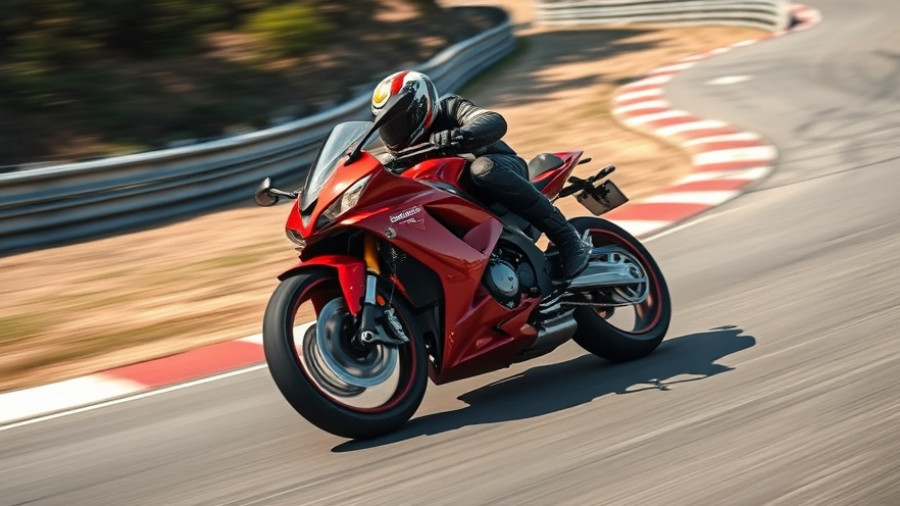
Understanding the J.D. Power 2025 APEAL Study
The J.D. Power 2025 Automotive Performance, Execution and Layout (APEAL) Study serves as a vital gauge for consumer satisfaction, particularly regarding emotional connections vehicles foster in their first 90 days of ownership. This year, the 30th edition of the study shines a spotlight on brands that have successfully catered to driver desires and preferences. With an impressive surge in buyer satisfaction observed across the board—marking the first such increase in nearly a decade—automakers are redefining their relationships with consumers.
Porsche and Mini: Champions of Satisfaction
Porsche and Mini are standing tall as champions within their respective Premium and Mass Market segments. Porsche's appeal rests on its comprehensive approach to blending performance, luxury, and design. The iconic brand cultivates a strong emotional bond with its consumers, who appreciate the meticulous craftsmanship that goes into every model. Meanwhile, Mini continues to charm buyers with its vibrant aesthetics and responsive handling, making it a favorite among those looking for fun and practicality in one package.
Noteworthy Changes in Brand Rankings
This year's study revealed an interesting dynamic among premium brands with BMW's X6 notably capturing the top individual model score—outpacing last year's coveted 7 Series. This indicates that consumers are recognizing and rewarding brands that embrace bold aesthetics, even if it diverges from conventional design. Meanwhile, Land Rover, Jaguar, Rivian, and Tesla rounded out the upper echelon of premium brands, reinforcing their strong consumer loyalty.
Mass Market Insights: Dodge and GMC Stand Out
In the Mass Market sector, Dodge and GMC ranked closely behind Mini, reflecting a robust emotional resonance among their respective buyers. The competition, however, remains fierce, with only slight performance differentials between popular brands. Surprisingly, infamous brands with devoted fanbases like Mazda, Subaru, and Jeep faltered, suggesting a need for reevaluation of their offerings. This could hint at factors like infotainment systems contributing to lower scores or, in Jeep's case, trade-offs between ruggedity and urban driving comfort.
Fuel Economy and Technology: Rising Consumer Expectations
This year's standout metric was the astonishing 13-point boost in consumer satisfaction regarding fuel economy, underscoring a collective shift by manufacturers toward improving efficiency. As today’s buyers increasingly prioritize eco-friendliness alongside performance, automakers are aligning their technologies to accommodate these desires without sacrificing the overall ownership experience. Similarly, gains in infotainment and interior design satisfaction signal the vital role technology plays in shaping modern buyers’ experiences.
The Impact of New Models on Owner Satisfaction
Interestingly, the APEAL Study revealed that vehicles introduced in their first model year often yield lower emotional satisfaction scores. J.D. Power explains that this trend is attributable to common “growing pains” that accompany new technologies and designs—such as system gremlins and tech bugs. In contrast, owners of carry-over models appear to build a stronger emotional connection, benefiting from the reliability and refinements inherent in familiar designs.
Customization Trend: Creating Unique Driving Experiences
As vehicle personalization becomes increasingly desirable, a notable 55% of current owners have taken advantage of user profiles in vehicles where available. This highlights consumer demand for unique driving experiences tailored to individual preferences. By providing customization options, manufacturers can enhance bonding with their consumers, empowering them with control over their ownership experience.
Looking Ahead: Trends in the Automotive Sector
The 2025 APEAL Study not only reflects current consumer sentiments but also sets the stage for future trends in the automotive sector. As consumers benefit from the increasing integration of advanced technology, brands will need to navigate the delicate balance between innovation and maintaining the emotional connections that drive loyalty and satisfaction. Meanwhile, as the largest automobile manufacturers in the world continue to evolve, their approaches to consumer engagement and satisfaction will play pivotal roles in shaping industry dynamics.
In conclusion, as demonstrated by the findings of the J.D. Power 2025 APEAL Study, brands that prioritize emotional satisfaction and consumer customization are not only retaining their customer bases but also setting the standard for future developments in the automotive industry.
 Add Row
Add Row  Add
Add 




Write A Comment